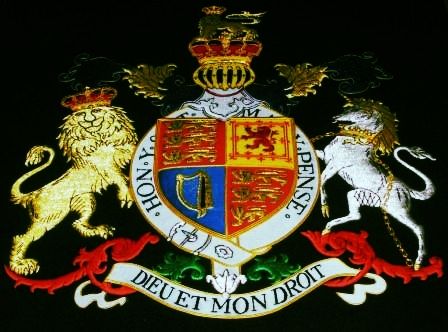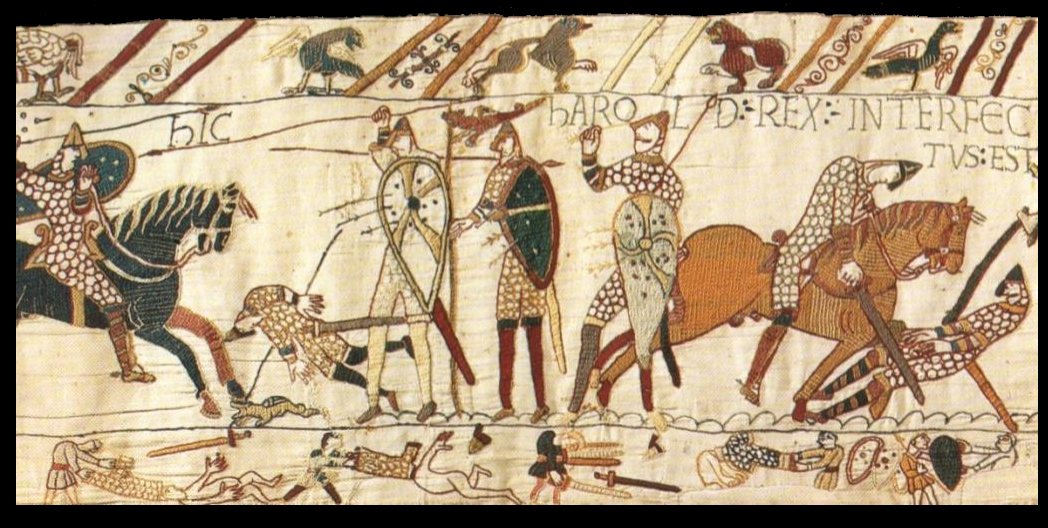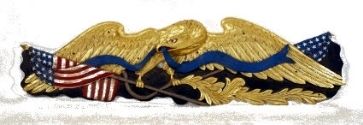Skip to comments.
Today In History - Battle of Hastings - 14 October 1066
BritishBatles.com ^
Posted on 10/14/2014 5:24:26 PM PDT by ConorMacNessa

TODAY IN HISTORY

Bayeux Tapestry – Battle of Hastings
The Death of King Harold
From British Battles.com:
"The Battle of Hastings – 14 October 1066
Account:
William, Duke of Normandy, launched his bloody and decisive invasion of Saxon England in 1066. In that year Edward the Confessor, King of England, died without heir, appointing by his will Harold Godwinsson, son of England’s most powerful nobleman, the Earl of Wessex, as his successor. Across the Channel, William of Normandy considered himself rightfully the next King of England, basing his claim on a promise by Edward the Confessor in the early 1050s and an oath of fealty sworn by Harold during an enforced visit to William’s capital at Rouen following his capture by the Count of Ponthieu.
Succeeding to the dukedom of Normandy as a bastard child of Duke Robert, William devoted his early adult life to enforcing his authority in a succession of ruthless campaigns, meanwhile building his dukedom into a fearsome mini-state, efficient both administratively and militarily.
In the summer of 1066 William assembled an army of noblemen and adventurers from across Northern France to invade England, promising lands and titles in his new kingdom to his followers and obtaining the support of the Pope for the venture.
A fleet of around 1,000 vessels, designed in the style of the old Norse “Dragon Ships” (80 feet long; propelled by oars and a single sail), was built and assembled to convey the army across the Channel.
Among the fighting knights of Northern France who joined William were Eustace, Count of Boulogne, Charles Martel, Roger de Beaumont and Roger de Montgomerie. The clergy was well represented; among them Odo, Bishop of Bayeux, William’s half brother, and a monk René who brought twenty fighting men and a ship, in the expectation of a bishopric in England. Robert le Blount commanded the fleet.
It was no secret that William intended to invade England. He had sent an insulting demand that Harold pay him homage and the gathering of the troops and ships had northern France in turmoil, causing Harold to assemble a powerful army along the Sussex coast in defence.
William’s fleet lay ready to cross the Channel, after being held in port for the duration of the summer by contrary winds, when Harold received the news that a Norwegian army led by King Harald Hadrada with Harold’s renegade brother Tostig had landed in Yorkshire after sailing up the Ouse.
Harold marched his army north and routed the invaders at the battle of Stamford Bridge, in which both Harald Hadrada and Tostig were killed.
The timing could not have been worse for the Saxons. The winds changed and William’s fleet crossed the Channel, landing on the Saxon coast unopposed on 28th September 1066.
Harold received the news of the Norman landing in York soon after his triumph over the Norse invaders and determined to march south immediately to do battle with William.
Harald Hadrada’s army had been nearly annihilated in the savage fighting at Stamford Bridge but the Saxons had suffered significant losses. The King’s brother, Earl Gurth, urged a delay while further forces were assembled but Harold was determined to show his country that their new king could be relied upon to defend the realm decisively against every invader.
Safely landed at Pevensey Bay, William built a fortification and then moved further east to Hastings; his troops ravaging the countryside which was known to be part of Harold’s personal earldom.
The Saxon army arrived in the area on 13th October 1066 and established a position on a hill north west of Hastings, known subsequently as Senlac (sang lac or lake of blood); putting up a rough fence of sharpened stakes along his line, fronted by a ditch. Harold issued orders as compelling as he could make them that, when throughout the battle, his army was not to move from this position, whatever the provocation.
Early on 14th October 1066 William moved forward with his army to attack the Saxon position, the Normans in the centre flanked on the left by the Bretons and on the right by the rest of the French.
The battle was fought over the rest of the day, a savage fight with heavy casualties on each side. The issue in the balance until late in the afternoon; marked by repeated cavalry attacks on the Saxon position by William’s cavalry, violently repelled until the final assaults. The Normans found the Saxon warriors with their battle axes, and in particular Harold’s “housecarles”, a formidable enemy. There were many accounts of knights with their horses being hacked in pieces by these terrible weapons wielded in great swinging blows.
At around midday an assault developed on the Saxon camp causing a section of Harold’s line to retreat in confusion. Reaching the top of an incline the Saxons turned on the pursuing Normans, held up by a ditch across their front, and drove them back with considerable loss.
In the early afternoon William’s left flank of Bretons gave way, to be pursued down the hill by the fyrd they had been attacking. This break in the line, that Harold had so adamantly warned against, gave the Normans the opportunity to break into the Saxon position at the top of the slope. The incessant Norman attacks began to break up Harold’s army; the barrage of arrows taking a heavy toll, in particular wounding Harold in the eye
During the course of the battle William had three horses killed under him and was forced to ride round the field, his head bared, to reassure his army that he was unhurt; assisted by his half-brother Odo, Bishop of Bayeux, in rallying the Norman soldiers.
A particularly savage fight developed around the position held by the now severely wounded Harold and his royal housecarles. Finally the Saxon King was killed, followed by his brothers, Earl Gurth and Earl Leofwin, and the remaining housecarles.
It was late afternoon and much of the remnants of the Saxon army gave way, fleeing the field; although a significant force continued to fight. The battle finally ended with all the remaining Saxons killed.
The heaped bodies were cleared from the centre of the battlefield, William’s tent pitched and a celebratory dinner held.
Casualties:
The figures are unknown but were heavy for the Normans and disastrous for the Saxons.
Follow-up:
It was some time before Saxon England acknowledged William as king. William was forced to march to the West and cross the Thames at Wallingford in Oxfordshire before circling round from the North and capturing London, devastating the countryside as he marched. The Tower of London was the first of the castles William built to dominate and subjugate England. William was finally crowned in Westminster Abbey on Christmas Day 1066 by the Saxon Archbishop, Aldred of York.
In March 1067 William returned to Normandy, leaving Odo, Bishop of Bayeux, to continue the process of building castles and subjugating the population. William only returned to England on four further occasions.
William the Conqueror died following the capture of Mantes in 1087, leaving England to be ruled by William II and Normandy by his eldest son Robert.
Probably only 20,000 Normans and other Frenchmen came to England as a result of the Conquest. Nevertheless the Saxon country was transformed, French becoming the language of administration and government and the Conqueror’s followers displacing the native nobility. The Saxons lamented their lost freedom for two centuries while England now looked across the Channel for cultural and political inspiration.
Conquest in France remained the obsession of the Frankish kings of England until the 16th Century. French names predominated among the nobility and the military classes; doubtless the Montgomery leading the British armies in the Second World War was a descendant of the Roger de Montgomerie who fought for the Conqueror.
The Bayeux Tapestry:
A remarkable feature of the Norman Conquest was its near-contemporaneous record in the Bayeux Tapestry; strictly a work of embroidery rather than tapestry (being embroidered on cloth rather than woven into it). The origins of the tapestry, lodged in Bayeux Cathedral, are uncertain; perhaps executed at the direction of William’s wife Matilda or by seamstresses in England at the direction of Odo, Bishop of Bayeux, and, after the Conquest, Earl of Kent, and given to the Cathedral at Bayeux by its bishop. |
|
|
|








"Riamh nár dhruid ó sbairn lann!"
Genuflectimus non ad principem sed ad Principem Pacis!
Listen, O isles, unto me; and hearken, ye people, from far; The LORD hath called me from the womb; from the bowels of my mother hath he made mention of my name. (Isaiah 49:1 KJV)
TOPICS: Culture/Society; United Kingdom
KEYWORDS: 1066; battleofhastings; battleofsenlac; bayeuxtapestry; england; haroldgodwinson; haroldii; hastings; kingharoldii; normans
Navigation: use the links below to view more comments.
first 1-20, 21-40, 41-43 next last
To: ConorMacNessa
Imagine living in the Dark Ages. Way before J.S. Bach and flush toilets.
Dark bread and dark beer. You didn't dare drink the water!
Sleeping on a bed of straw - usually infested with vermin. But if you were wealthy, you indulged in a very rich diet of multi-course meals with all sorts of dainty dishes, washed down with flagons of wine.
If you were poor, the average life expectancy was about 32 years so you didn't suffer that long.
To: ConorMacNessa
A pivotal moment in Western Civilization. I doubt the current generation emerging from our schools have heard of it. Judging from the answers people on the streets of Sleepy Hollow, NY gave to Jesse Watters when he interviewed them, asking what they knew about Christopher Columbus, you are probably right.
3
posted on
10/14/2014 5:32:30 PM PDT
by
Fiji Hill
To: ConorMacNessa
Ok, so here’s a question...
Wouldn’t a movie about William the Conquerer be a great idea?
4
posted on
10/14/2014 5:33:08 PM PDT
by
matginzac
To: matginzac
And we live with the consequences of the Battle of Hastings even today...
5
posted on
10/14/2014 5:36:42 PM PDT
by
matginzac
To: ConorMacNessa
And a BBC News Story that King Harold II survived the Battle of Hastings and died as a hermit at age 80.
http://www.bbc.com/news/uk-england-sussex-29612656
“An underground scan is being carried out at Waltham Abbey in Essex in a hunt for evidence that King Harold survived the Battle of Hastings.”
“Novelist and amateur historian Peter Burke wants to test his theory that the king recovered and lived for 40 years after the battle on 14 October 1066.”
6
posted on
10/14/2014 5:37:31 PM PDT
by
GreyFriar
(Spearhead - 3rd Armored Division 75-78 & 83-87)
To: matginzac
Works for me - several decades ago, Hollywood produced several good historical films. A little short on historical accuracy, but better than what we'd get today, IMHO.
 |
 |

America demands Justice for the Fallen of Benghazi! |
 |
 |
O stranger, tell the Lacedaemonians that we lie here, obedient to their command.
Listen, O isles, unto me; and hearken, ye people, from far; The LORD hath called me from the womb; from the bowels of my mother hath he made mention of my name. (Isaiah 49:1 KJV)
7
posted on
10/14/2014 5:37:58 PM PDT
by
ConorMacNessa
(HM/2 USN, 3/5 Marines RVN 1969 - St. Michael the Archangel, defend us in Battle!)
To: SamAdams76
But if you were wealthy, you indulged in a very rich diet of multi-course meals with all sorts of dainty dishes, washed down with flagons of wine. And that might bring on an attack of gout, known at the time as a disease of kings and nobles.
8
posted on
10/14/2014 5:38:27 PM PDT
by
Fiji Hill
To: matginzac
9
posted on
10/14/2014 5:40:03 PM PDT
by
Textide
(Lord, grant that I may always be right, for thou knowest I am hard to turn. ~ Scotch-Irish prayer)
To: GreyFriar
Had not heard that - I wonder what evidence they could find - unless I'm wrong, we have no DNA samples and I'm curious as to how such a contention could be established.
 |
 |

America demands Justice for the Fallen of Benghazi! |
 |
 |
O stranger, tell the Lacedaemonians that we lie here, obedient to their command.
Listen, O isles, unto me; and hearken, ye people, from far; The LORD hath called me from the womb; from the bowels of my mother hath he made mention of my name. (Isaiah 49:1 KJV)
10
posted on
10/14/2014 5:41:08 PM PDT
by
ConorMacNessa
(HM/2 USN, 3/5 Marines RVN 1969 - St. Michael the Archangel, defend us in Battle!)
To: ConorMacNessa
What is truly amazing is that all 3 contenders for the English crown were of close Viking descent at a time when the Viking raids were well within family memory (793-1035). One can take the speculation of a win by Hadrada serving to lock England into a more lengthy north-looking confederation but I think he too would have been defeated by William. It is the thought of Harold defeating William with the fresh troops that draws the speculation of what-if!
Fully agree that this is one of the cusps of history! Thanks for the reminder!
11
posted on
10/14/2014 5:46:19 PM PDT
by
SES1066
(Quality, Speed or Economical - Any 2 of 3 except in government - 1 at best but never #3!)
To: ConorMacNessa
I’ve read some of the history and consider it as good if not superior to those movies done of Henry II etc.
Think it could sell in today’s mindless, CGI dominated cesspool called Hoolywood?
To: ConorMacNessa
13
posted on
10/14/2014 5:48:54 PM PDT
by
GreyFriar
(Spearhead - 3rd Armored Division 75-78 & 83-87)
To: matginzac
Ok, so here’s a question... Wouldn’t a movie about William the Conquerer be a great idea? William the Conqueror, a Romanian movie, was made in 1982. Romanian army soldiers played Anglo-Saxon and Norman warriors and peasants.
To: ConorMacNessa; All
One aspect of the campaign not often highlighted is the relative swiftness with which Harold was able to recover after a punishing battle at Stamford Bridge to face William at Hastings.
From the accounts I have seen, it appears that the Saxons had guts to spare, but were outwitted and outmaneuvered by William on the field. Once they broke ranks to pursue William's feints, they were doomed. Their battle line stretched and essentially lost its integrity.
Must leave to pick my son up from work. Will bbiab, FRiends.
 |
 |

America demands Justice for the Fallen of Benghazi! |
 |
 |
O stranger, tell the Lacedaemonians that we lie here, obedient to their command.
Listen, O isles, unto me; and hearken, ye people, from far; The LORD hath called me from the womb; from the bowels of my mother hath he made mention of my name. (Isaiah 49:1 KJV)
15
posted on
10/14/2014 5:50:04 PM PDT
by
ConorMacNessa
(HM/2 USN, 3/5 Marines RVN 1969 - St. Michael the Archangel, defend us in Battle!)
To: Textide
I’m not a big vid game person but understand how some of them could give you the feel of the era.
William’s story of being a bastard yet inheriting, beating Matilda for her disrespect yet she falls for him, his children being less than up to the task of keeping things together and his death was stunningly sad, his corpse abandoned by the servants...yet we live with the results of his ambition and determination to this day...wow!
I’d go see it.
Who’d play William? Russell Crowe? Daniel Day-Lewis? Who?
To: Fiji Hill
Ok, so it wasn’t on my radar screen so I take it it didn’t do too well at the box office.
I’m thinking a Gladiator-type epic...the story deserves nothing less.
To: ConorMacNessa
"A pivotal moment in Western Civilization. I doubt the current generation emerging from our schools have heard of it. " I doubt they have, as well...which is why the History Channel is now devoted to aliens and pawn shops. Have to hold the attention of the low-info crowd.
18
posted on
10/14/2014 5:57:13 PM PDT
by
CatherineofAragon
((Support Christian white males---the architects of the jewel known as Western Civilization.))
To: ConorMacNessa
A few years ago we had the chance to visit Bayeaux and see the famous “tapestry”. I knew the subject of the art but expected a huge work of art hung on a huge wall. Much to our surprise the “tapestry” is about 15” high and about 200’ long! (15 inches by 200 feet.) Amazing work to see even if the hall is dimly lit. (to preserve the piece.)
In nearby Caen, William's castle remains can be seen.
If you visit France, I recommend Normandy for the history is there to see.
19
posted on
10/14/2014 5:58:09 PM PDT
by
BatGuano
(You don't think I'd go into combat with loose change in my pocket, do ya?)
To: ConorMacNessa
E. D. Hirsch, an advocate of "cultural literacy," a common body of knowledge with which everyone in a given culture should be familiar, wrote that there are four dates that every American should know: 1066, 1492, 1776, 1939-1945.
- 1066--the eruption of the Sunset Crater volcano near present-day Flagstaff, Ariz.
- 1492--the fall of the Muslim kingdom of Granada to the armies of Christian Spain
- 1776--Adam Smith's An Inquiry into the Nature and Causes of the Wealth of Nations and the first volume of Edward Gibbon's The History of the Decline and Fall of the Roman Empire hit the book stores
- 1939-1945--The USC Trojans made four trips to the Rose Bowl
Navigation: use the links below to view more comments.
first 1-20, 21-40, 41-43 next last
Disclaimer:
Opinions posted on Free Republic are those of the individual
posters and do not necessarily represent the opinion of Free Republic or its
management. All materials posted herein are protected by copyright law and the
exemption for fair use of copyrighted works.
FreeRepublic.com is powered by software copyright 2000-2008 John Robinson



























